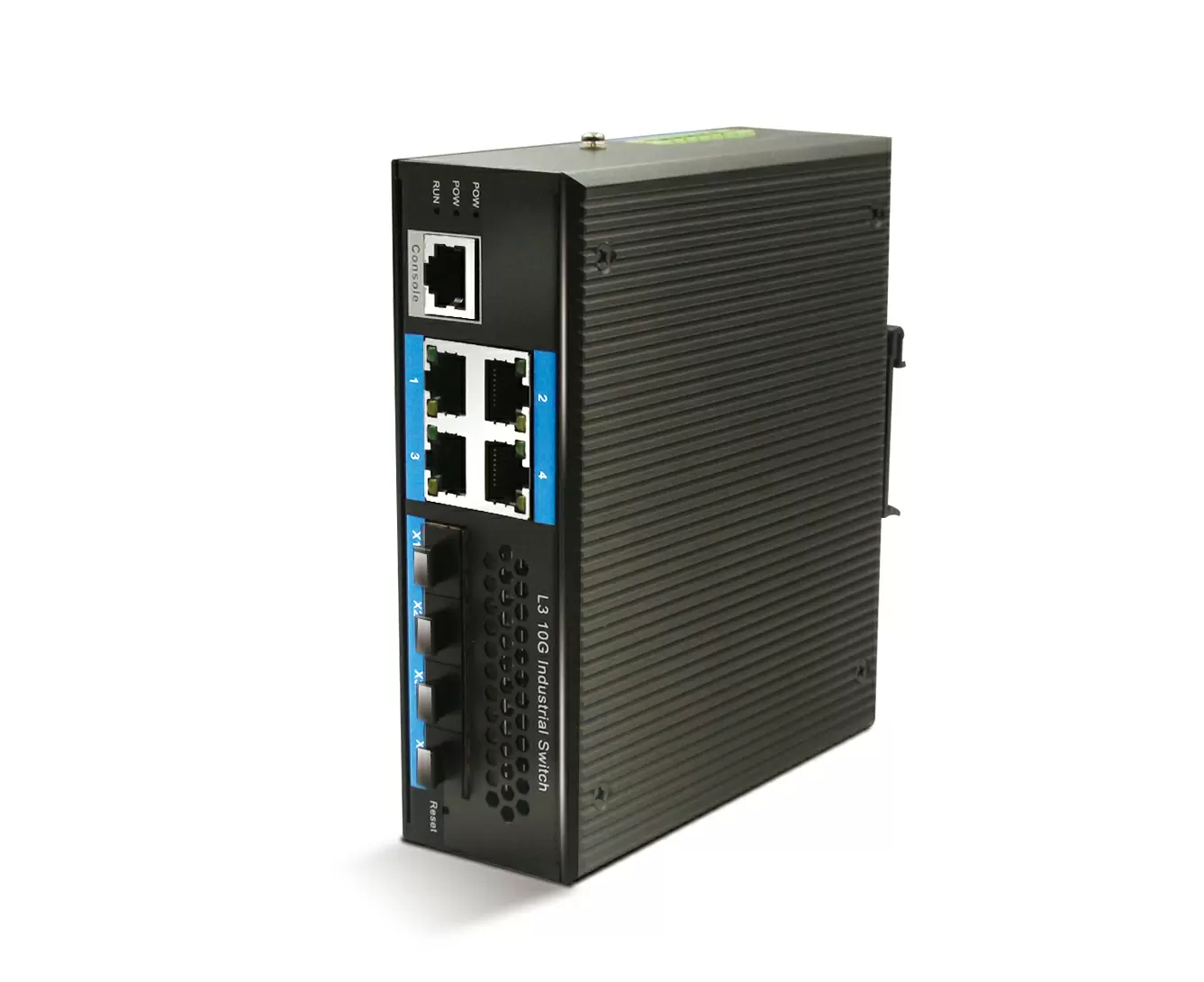.

In today's rapidly evolving industrial landscape, the role of network infrastructure has become increasingly critical. As industries embrace digitalization and automation, reliable and efficient communication networks are vital for seamless operations. One crucial component of such networks is the L3 industrial Ethernet switch, which plays an indispensable role in establishing connectivity, managing data flow, and ensuring network security. This article delves into the significance of L3 industrial Ethernet switches and their indispensable role in modern industrial settings.
1. Achieving Enhanced Network Performance
The L3 Industrial Managed Ethernet Switch acts as a backbone for industrial networks, facilitating the transfer of data between various devices and systems. Unlike L2 switches, which operate at the data link layer, L3 switches operate at both the network and data link layers. This enables them to provide advanced routing and network management capabilities. With built-in intelligence, L3 switches can efficiently handle large amounts of data traffic and ensure optimized network performance. They offer features such as Quality of Service (QoS) and traffic prioritization, enabling critical applications to receive the required bandwidth and minimizing network congestion.
2. Enabling Scalability and Flexibility
Industrial networks often undergo expansions and modifications as businesses grow and adapt to changing requirements. L3 industrial Ethernet switches facilitate network scalability by offering support for a larger number of devices and network segments. With the ability to handle multiple VLANs (Virtual Local Area Networks) and support for various protocols, L3 Industrial Managed Ethernet Switch allow for efficient network segmentation. This segmentation ensures improved security, easier network management, and enables the creation of separate subnetworks for different departments or applications.
3. Enhancing Network Security
In an era where cybersecurity threats are on the rise, ensuring the safety and integrity of industrial networks is of paramount importance. L3 industrial Ethernet switches contribute to network security by implementing advanced security features. These switches support features such as Access Control Lists (ACLs), which allow administrators to control network access based on specific criteria. Additionally, L3 switches offer Virtual Private Network (VPN) functionality to establish secure remote connections. By implementing these security measures, L3 switches protect sensitive industrial data from unauthorized access, enhancing overall network security.
4. Streamlining Network Management
L3 industrial Ethernet switches provide centralized management capabilities, simplifying network administration tasks. By supporting network management protocols such as Simple Network Management Protocol (SNMP) and providing web-based graphical interfaces, L3 switches enable administrators to monitor and configure the network efficiently. These switches also support features like Spanning Tree Protocol (STP) and Rapid Spanning Tree Protocol (RSTP), which help in preventing network loops and ensuring network redundancy. With simplified network management, organizations can reduce downtime, enhance troubleshooting capabilities, and improve overall network reliability.
In conclusion, L3 Industrial Managed Ethernet Switch are indispensable components in modern industrial networks. From optimizing network performance and scalability to enhancing network security and simplifying management, L3 switches provide a comprehensive solution for robust and reliable communication infrastructure. As industries continue to embrace digital transformation, the importance of L3 industrial Ethernet switches will only grow, ensuring seamless connectivity and empowering industries to thrive in the digital era.





